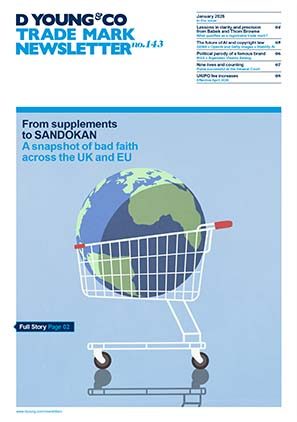SKINIDENT is not (SKIN-)IDENTICAL …or the limits of “Thomson Life”
The General Court has once more found that a modified version of an earlier mark could have an independent distinctive role in a later mark.
However, the Court of Justice of the European Union’s (CJEU) decision C-120/04 Medion AG v Thomson Multimedia Sales (Thomson Life) does not mandate such a finding.
Background
SkinIdent AG is owner of the mark SKINIDENT in class 3. Beiersdorf AG filed an application for NIVEA SKIN-IDENTICAL Q10 in class 3. SkinIdent opposed the application.
The European Union Intellectual Property Office (EUIPO) rejected the opposition and the Board of Appeal dismissed the subsequent appeal by SkinIdent. As part of these proceedings it remained uncontested that NIVEA was a renowned mark. SkinIdent appealed to the General Court arguing inter alia infringement of Article 8(1)(b) of the European Union Trade Mark Regulations (EUTMR).
Preliminary thought
At first glance, this could be perceived as a standard Thomson Life case. The element Q10 is descriptive and negligible and the word element SKIN-IDENTICAL has an independent distinctive role in the application. Consequently, the relevant signs for assessing a likelihood of confusion are SKINIDENT v SKIN-IDENTICAL.
Neither the EUIPO, Board of Appeal nor General Court took that view.
Decision
In relation to the infringement of Article 8 (1)(b) EUTMR, the General Court found the following:
SKIN-IDENTICAL does not hold an independent distinctive role in the application NIVEA SKIN-IDENTICAL Q10.
The signs have to be compared as a whole, unless all other elements are negligible. Neither the element Q10 nor NIVEA would be negligible, though the General Court confirmed that the element Q10 is descriptive.
The decision in Thomson Life did not warrant a different finding. The decision did not relate to an earlier mark incorporated into a later mark in a modified form. Rather, Thomson Life concerned the identical incorporation of an earlier mark in a later mark. As a result, the decision could not be relied upon to find SKIN-IDENTICAL to have retained an independent distinctive role in the composite mark NIVEA SKIN-IDENTICAL Q10.
Negating an independent distinctive role in relation to SKIN-IDENTICAL would also not differ from the approach taken in T-569/10 Bimbo SA v OHIM (Bimbo Doughnuts). The Bimbo Doughnuts decision confirmed that there could be a likelihood of confusion, even if the earlier mark was not reproduced identically in the later mark. However, this required an assessment of all relevant factors.
In light of that, the General Court confirmed that the Bimbo Doughnuts decision allowed the Board of Appeal to come to a different conclusion in this case. Notably, the fact that NIVEA was a renowned mark could not support the finding of an independent distinctive role.
Perceived as a whole, the signs SKINIDENT and NIVEA SKIN-IDENTICAL Q10 only have a low visual and aural similarity.
Specifically, the hyphen in SKIN-IDENTICAL would result in visual separation, irrespective of whether the hyphen was grammatically necessary. Even if it was assumed that SKINIDENT and SKIN-IDENTICAL were sufficiently similar, the additional elements NIVEA and Q10 would result in a low visual and phonetic similarity.
There was no error in a finding of low conceptual similarity.
While SKINIDENT does not have any meaning SKIN-IDENTICAL would be understood by the majority of the relevant public to have a clear and unambiguous meaning.
Even if the relevant public, for example in Greece or Cyprus, did not understand the term, IDENTICAL, would be irrelevant. The fact that NIVEA is not included in the earlier mark would support this finding.
The same would apply in case part of the relevant public understood the element SKIN to be descriptive in relation to the relevant class 3 goods, in particular since the relevant public would not understand the term IDENT.
In short
This decision explains the applicability of Thomson Life. When a later mark does not identically incorporate an earlier mark, this modified part will not automatically hold an independent distinctive role in the later mark. Rather, this has to be assessed on a case-by-case basis.
Case details at a glance
Jurisdiction: European Union
Decision level: General Court
Parties: SkinIdent AG v EUIPO
Citation: T 665/22
Date: 08 November 2023

